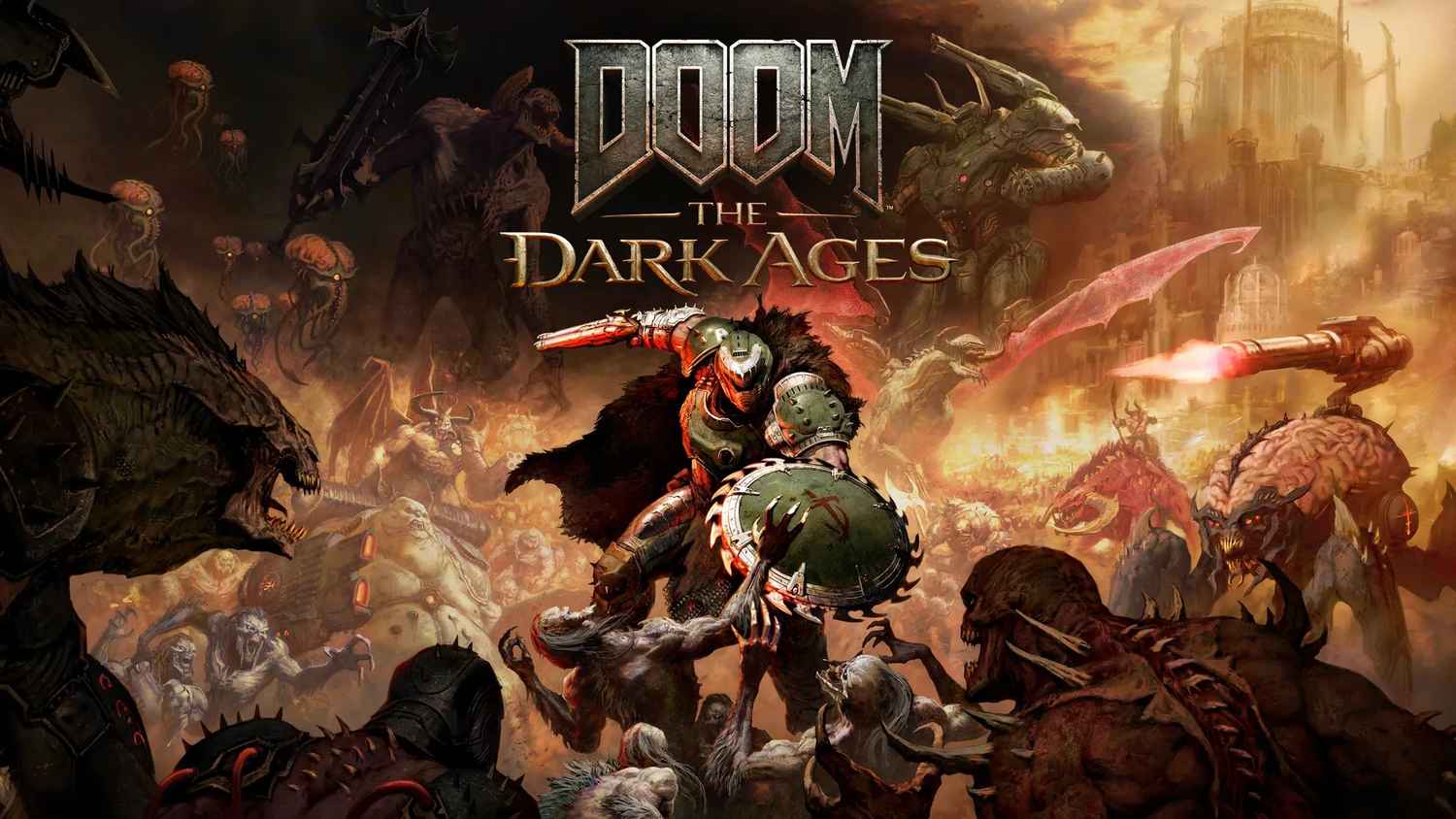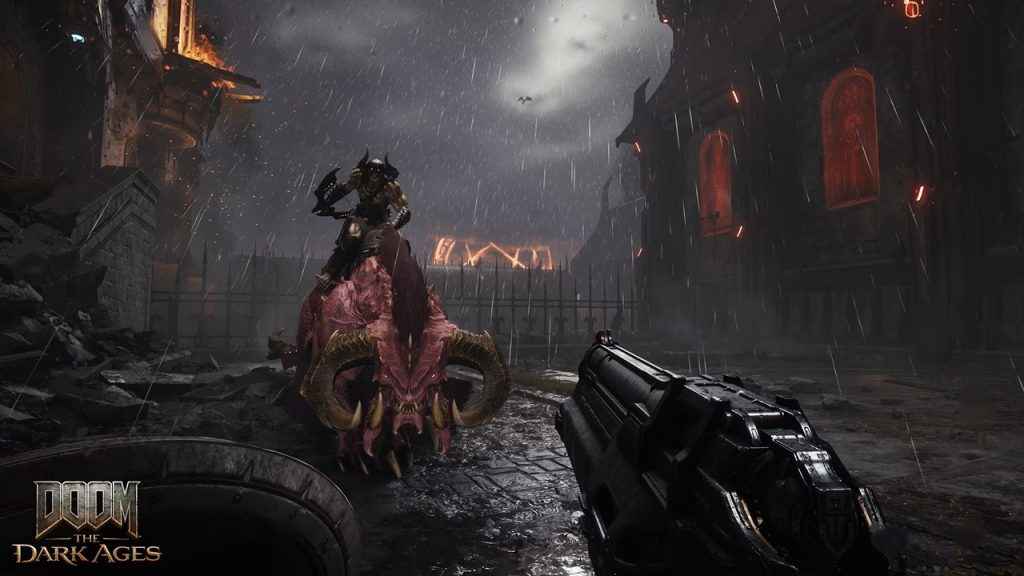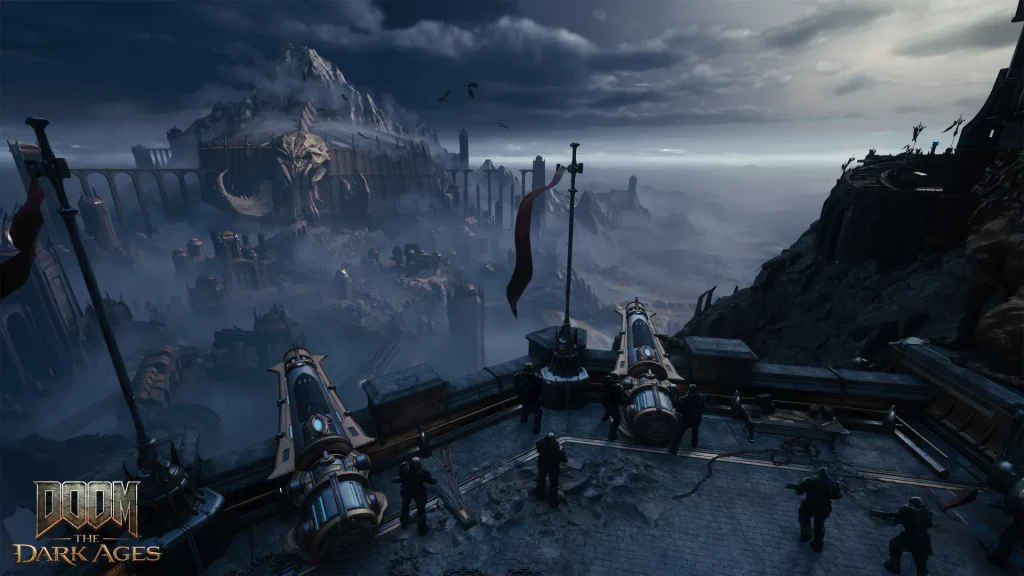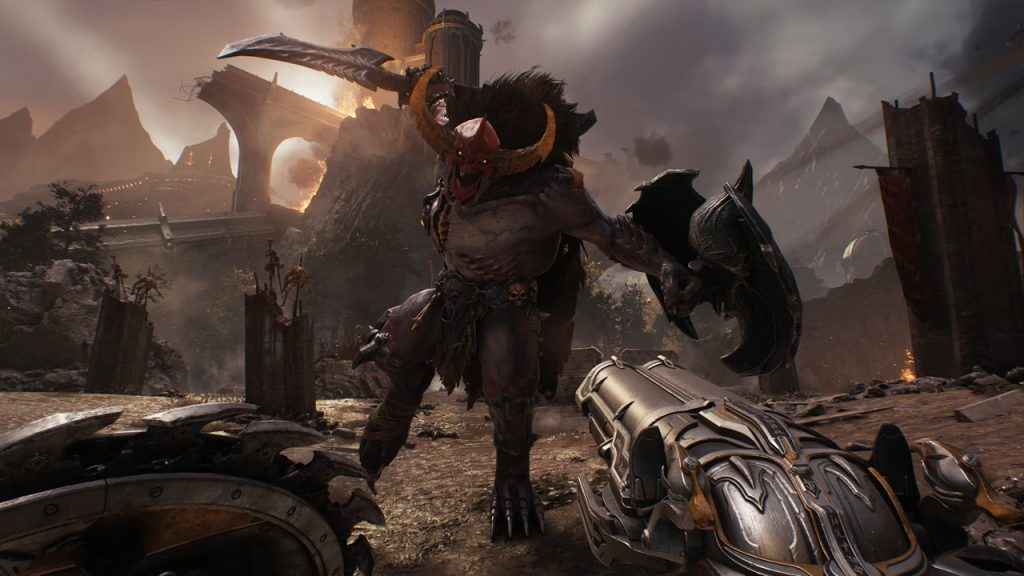DOOM: The Dark Ages on PC: A Performance Deep Dive

id Software returns in 2025 with DOOM: The Dark Ages, a prequel to DOOM (2016) and DOOM Eternal that plunges players into a grim, medieval-inspired setting, reimagining the genesis of the Doom Slayer. Powered by the new id Tech 8 engine, the game continues the studio’s commitment to cutting-edge performance and technology, while embracing an aesthetic and gameplay evolution grounded in brutal, fast-paced action.
 Survey
Survey
So how does the game perform? We ran DOOM: The Dark Ages on the Inno3D GeForce RTX 5070 Ti and the RTX 3080 Founders Edition to take a gander at what kind of performance can be eked out. The game also offers a variety of upscaler support and several minute calibration options, all of which can be played around to make the game run best on your machine. Let’s have a look at how DOOM: The Dark Ages sets itself apart in the modern PC gaming landscape.
Performance Benchmarks
We tested the game at its “Ultra Nightmare” preset across three resolutions—1080p, 1440p, and 2160p (4K). Frame Generation and DLSS were initially disabled for baseline comparisons. The RTX 5070 Ti consistently led over the older RTX 3080, delivering smoother gameplay in every test. And it goes without saying, we couldn’t run Frame Generation on the older RTX 3080.
| Resolution | RTX 5070 Ti | RTX 3080 |
|---|---|---|
| 1080p | 154 FPS | 116 FPS |
| 1440p | 119 FPS | 84 FPS |
| 2160p (4K) | 80 FPS | 56 FPS |
The performance delta between the two cards averages around 30–40%, especially pronounced at 1440p and 4K. The RTX 5070 Ti benefits from newer architectural efficiencies, and DOOM’s use of the Vulkan API appears to scale exceptionally well with modern GPUs.
Performance with Frame Generation (RTX 5070 Ti at 4K, Ultra Nightmare)
To assess the impact of frame generation, we benchmarked the RTX 5070 Ti using various FG levels in combination with DLAA:
| Setting | FPS (Average) |
|---|---|
| Base (No FG) | 88 |
| DLAA Only | 83 |
| DLAA + FG2 | 134 |
| DLAA + FG3 | 183 |
| DLAA + FG4 | 229 |
The performance uplift with FG3 and FG4 is significant, almost tripling the base frame rate. However, as noted elsewhere in this review, the added latency from frame generation—especially in a fast-paced shooter like DOOM—can impact responsiveness depending on your input method and display.
Performance with DLSS + Frame Generation (RTX 5070 Ti at 4K)
We also tested DLSS in conjunction with Frame Generation. Results are below:
| Setting | FPS (Average) |
|---|---|
| Base (No FG) | 88 |
| DLSS + FG2 | 183 |
| DLSS + FG3 | 241 |
| DLSS + FG4 | 294 |
DLSS + FG delivers an even higher performance ceiling than DLAA + FG, particularly at FG4, where the RTX 5070 Ti nearly hits 300 FPS. This makes it an excellent choice for high refresh-rate displays. However, as previously mentioned, balancing FG with input latency remains key to maintaining gameplay fluidity.
Engine & Visuals
id Tech 8 offers noticeable enhancements over its predecessor. Asset detail, lighting, shadow fidelity, and environmental density have all received a substantial upgrade. id Software has managed to retain the speed and responsiveness that define the franchise while pushing the visuals to a new standard.

One of the standout elements is the absence of LOD (level-of-detail) pop-in. Thanks to a system that behaves similarly to UE5’s Nanite, geometry remains stable even during fast traversal. Textures remain crisp under close inspection, with a blend of static and procedural surface detail rendering.
Ray tracing is used sparingly and efficiently. Reflections, ambient occlusion, and select shadows benefit from RT enhancements without tanking performance—credit to the level design and engine efficiency. Unlike some titles where RT features overwhelm even high-end hardware, here it complements the visual design without excessive demands.
Upscaling, Frame Generation, and Input Latency
DOOM: The Dark Ages supports DLSS, FSR, XeSS, and their respective frame generation technologies. However, DLSS Frame Generation introduces barely perceptible latency during twitch-based gameplay. While the latency difference between FG On and FG Off appears minor, it was a noticeable with mouse and keyboard control. However, it’s also something that you’d get used in a matter of minutes.
In contrast, DLSS upscaling in Quality mode reduced latency significantly, making it a preferable option on the RTX 5070 Ti and RTX 3080 at higher resolutions.
One limitation is the mutual exclusivity between DLSS upscaling and FSR Frame Generation. This affects RTX 30-series users who might wish to combine FSR FG with DLSS to extend performance but find the option locked out due to compatibility restrictions.
Memory Management & VRAM Considerations
VRAM allocation is handled intelligently. Even at “Ultra Nightmare” settings with frame generation enabled, the game peaks at 14.8 GB of VRAM at 4K. However, at 1080p and 1440p, 8 GB GPUs still perform well without crashing, thanks to the engine’s ability to offload excess memory requirements to system RAM. This represents a notable difference from Indiana Jones, also running on a variant of id Tech, which exhibits VRAM sensitivity leading to crashes.
| Settings + Resolution | VRAM Usage |
|---|---|
| 1080p Low | 7.3 GB |
| 1440p High | 8.3 GB |
| 4K Max + FG | 14.8 GB |
This makes the game accessible across a broader range of mid-range GPUs, especially when upscaling and texture pool adjustments are used effectively.
Shader Stability
DOOM: The Dark Ages does not suffer from the dreaded shader stutter seen in many Unreal Engine 5 games. The engine compiles shaders during the initial load of each level, resulting in seamless gameplay. This is a major usability win, especially on PCs with modest CPUs.

Accessibility options are abundant: from parry timing adjustments, damage modifiers, and aggro settings to full colour-blind and UI scale options. Players can tune difficulty beyond traditional “easy” or “hard” selections, democratising access to the visceral gameplay loop regardless of skill level.
Game Design & Environment
Despite the technological focus, it’s worth acknowledging id Software’s level design. With 22 maps, each filled with verticality, interactive elements, and layered combat zones, the game doesn’t recycle layouts. The blend of medieval architecture and sci-fi tech is distinctive, and the maps strike a strong balance between linear progression and exploration.
The dynamic lighting system lends weight to environments, combining real-time RT effects with pre-baked illumination for efficiency.
DOOM: The Dark Ages does quite well
DOOM: The Dark Ages is a technical showcase of what modern PC hardware, Vulkan, and an expertly tuned engine can accomplish. The Inno3D RTX 5070 Ti delivers excellent performance at all tested resolutions, outpacing the RTX 3080 by a fair margin. With DLSS or FSR enabled, even 4K becomes a viable option for this card, making it a standout for high refresh-rate gameplay.
The game’s engine is not only robust and scalable, but refreshingly well-optimised—something sorely missing from many of today’s PC releases. id Software has delivered a compelling experience that honours DOOM’s legacy while modernising its technological foundation. From accessibility to visual fidelity, and most importantly, sheer fluidity of play, DOOM: The Dark Ages is a textbook example of how PC-first development should be done.
Mithun Mohandas
Mithun Mohandas is an Indian technology journalist with 14 years of experience covering consumer technology. He is currently employed at Digit in the capacity of a Managing Editor. Mithun has a background in Computer Engineering and was an active member of the IEEE during his college days. He has a penchant for digging deep into unravelling what makes a device tick. If there's a transistor in it, Mithun's probably going to rip it apart till he finds it. At Digit, he covers processors, graphics cards, storage media, displays and networking devices aside from anything developer related. As an avid PC gamer, he prefers RTS and FPS titles, and can be quite competitive in a race to the finish line. He only gets consoles for the exclusives. He can be seen playing Valorant, World of Tanks, HITMAN and the occasional Age of Empires or being the voice behind hundreds of Digit videos. View Full Profile